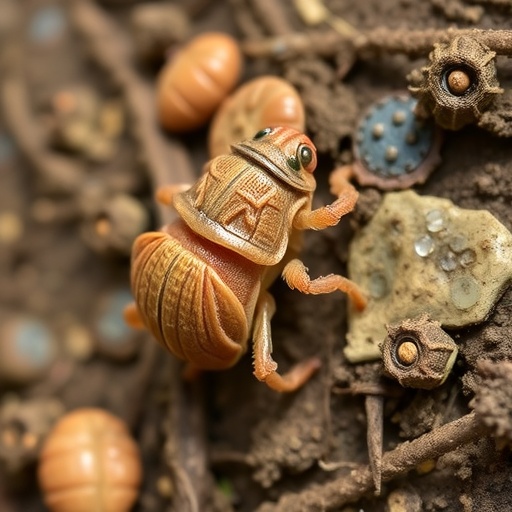.adsslot_bXHA6tuhFc{ width:728px !important; height:90px !important; }
@media (max-width:1199px) { .adsslot_bXHA6tuhFc{ width:468px !important; height:60px !important; } }
@media (max-width:767px) { .adsslot_bXHA6tuhFc{ width:320px !important; height:50px !important; } }
ADVERTISEMENT
In light of climate change and its repercussions on our ecosystems, understanding the characteristics of such resilient species takes on new urgency. As cicadas increasingly become symbols of resilience in dynamic habitats, studying their unique features can provide insights into how organisms adapt at both micro and macro levels. Such knowledge is invaluable not only for ecological studies but also for informing conservation efforts aimed at preserving these remarkable insects and the habitats they enrich.
Subject of Research: The soil-adhesive or water-repellent properties of cicada exuviae.
Article Title: Soil-adhesive or water repellent properties of the surface of cicada exuviae.
Article References: Murayama, J., Yamazaki, K., Ogasawara, H. et al. Soil-adhesive or water repellent properties of the surface of cicada exuviae. Sci Nat 112, 25 (2025). https://doi.org/10.1007/s00114-025-01976-2
Image Credits: AI Generated
DOI: https://doi.org/10.1007/s00114-025-01976-2
Keywords: cicada, exuviae, biomimicry, surface properties, soil adhesion, water repellency, materials science, environmental management, adaptive evolution.
Tags: biomimicry applications of cicadascicada exuviae propertiesdual functionality in natural materialsenvironmental adaptability of insectsevolutionary advantages of cicadashydrophobic characteristics of exoskeletonsmaterials science innovationsnano-scale surface structuresscientific study of insect exoskeletonssoil adhesion mechanismstransformative properties of cicada exuviaewater resistance in nature





